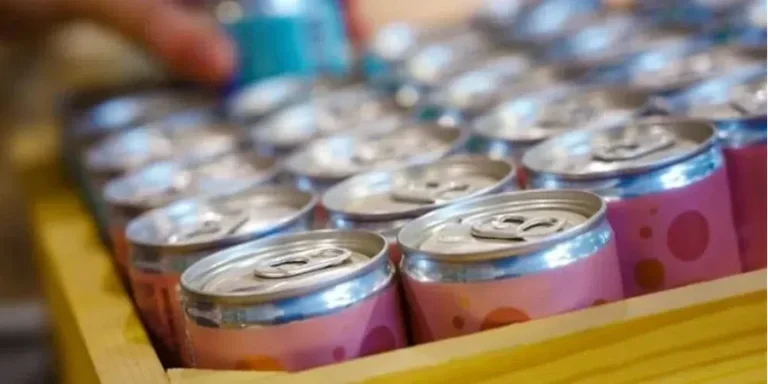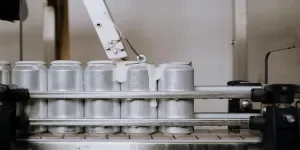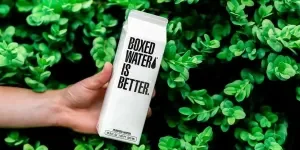The soft drink industry is a global giant, quenching our thirst with a dizzying array of beverages packaged in ever-evolving containers. From the precision of aluminum can production to the evolution of bottle design, each container tells a story of advanced engineering and environmental awareness. With the rise of materials like rPET and bioplastics, alongside the resurgence of returnable bottle systems, packaging is transforming to meet modern demands while reducing its environmental footprint.
A Closer Look on Aluminum Can Production
Aluminum cans have become a mainstay in the beverage industry due to their recyclability, durability, and ability to preserve the freshness and flavor of the drink.
The journey of an aluminum can begins with bauxite, a raw material sourced from various parts of the world. Bauxite undergoes a refining process to produce alumina, which is then smelted to create pure aluminum. This aluminum is then rolled into thin sheets, which serve as the starting point for can production.
Aluminum machining plays a crucial role in the next stage, where these sheets are precisely cut and formed into can bodies. High-speed presses shape the can body, while separate processes form the lid and the iconic pull-tab.
To ensure product longevity and safety, both internal and external coatings are applied. Internal coatings prevent the acidic content of the soft drink from reacting with the aluminum, preserving the taste and quality of the beverage. External coatings provide a canvas for branding and labeling, contributing to the product’s visual appeal on the shelf.
The Evolution of Bottle Design and Packaging
While aluminum cans have carved their niche in the beverage sector, plastic bottles remain a popular choice for packaging soft drinks.
The history of soft drink bottles is a testament to continuous innovation, driven by the need for improved functionality, reduced environmental impact, and aesthetic packaging design.
Early iterations were predominantly made from glass, but the advent of plastics revolutionized bottle design. Lightweighting has been a key focus in packaging, with manufacturers constantly striving to reduce the amount of plastic used in bottle production. This not only lowers material costs but also significantly decreases the environmental footprint associated with transportation and waste disposal.
Ergonomics has also played a crucial role in bottle evolution. Designs have evolved to improve grip, facilitate easy pouring, and enhance the overall user experience. For instance, the contouring of a bottle can make it more comfortable to hold, while the size and placement of the opening can influence how easily liquid can be poured. Even the design of bottle caps is taken into consideration, with features like ridges or grooves that provide a better grip for opening.
Moreover, aesthetics remain a powerful driver in bottle design, with brands leveraging shape, color, and labeling to create a unique identity and stand out on crowded shelves. The shape of a bottle can be used to convey a certain brand image or message, while the color can evoke specific emotions or associations. Labeling also plays an important role in bottle design, providing information about the product and brand, as well as creating visual interest.

Material Innovations with rPET and Bioplastics for Beverage Packaging
The beverage industry is increasingly embracing sustainable packaging solutions, and material innovations are at the forefront of this movement.
Recycled PET (rPET) has emerged as a game-changer, offering a closed-loop solution for plastic bottle production. By utilizing post-consumer recycled content, rPET significantly reduces reliance on virgin plastic, conserves resources, and minimizes waste. A study by the Association of Plastic Recyclers (APR) found that using rPET reduces greenhouse gas emissions by up to 79% compared to virgin PET.
Beyond rPET, the industry is actively exploring the potential of bioplastics. These plant-based materials offer a renewable alternative to traditional petroleum-based plastics.
For example, there’s PLA (Polylactic Acid), derived from corn starch or sugarcane, which is used in various applications like food packaging and 3D printing. Another promising bioplastic is PHA (Polyhydroxyalkanoates), produced by microorganisms, known for its biodegradability in diverse environments. Starch-based plastics, derived from crops like corn and potatoes, are also gaining traction for their affordability and use in items like disposable cutlery.
While still in its early stages, bioplastic technology holds immense promise for creating truly sustainable packaging solutions for beverages.
Returnable Bottle Systems as a Sustainable Solution
Beyond material innovations, the beverage industry is rediscovering the value of returnable bottle systems. This classic approach, where consumers return empty bottles to be cleaned and refilled, offers a compelling solution to the growing problem of packaging waste. Through promoting reuse and minimizing waste, returnable bottle systems contribute to a circular economy where resources are kept in use for as long as possible.
Designed for durability and longevity, these bottles are typically made from robust materials like glass or sturdy plastics capable of withstanding many cycles of use. This significantly reduces waste and the demand for raw materials compared to single-use containers.
Moreover, returnable systems often incorporate deposit schemes that incentivize consumer participation, encouraging responsible disposal and fostering a circular economy. This model presents a powerful opportunity for the beverage industry to significantly reduce its environmental impact and embrace a more sustainable future.
A New Wave of Beverage Innovation
The soft drink industry demonstrates a commitment to both quality and environmental responsibility. This is evident in everything from the intricate aluminum machining involved in can production to the sustainable innovations in plastic bottles and the implementation of returnable bottle systems. But the journey doesn’t end with the container. What about the beverages themselves?
Emerging trends in the beverage sector point towards a growing demand for healthier options, with natural ingredients and reduced sugar content taking center stage. This shift in consumer preference is driving a new wave of innovation, challenging producers to rethink formulations and explore exciting new flavor profiles.
There is a surge in beverages infused with botanicals, antioxidants, and functional ingredients that promise health benefits. From exotic fruit extracts to adaptogenic herbs, the quest for the perfect drink now encompasses not just refreshment but also well-being.
The future of soft drinks will be diverse and dynamic, with a growing range of natural and functional beverages catering to different needs and tastes.
Source from Europages
Disclaimer: The information set forth above is provided by Europages independently of Alibaba.com. Alibaba.com makes no representation and warranties as to the quality and reliability of the seller and products. Alibaba.com expressly disclaims any liability for breaches pertaining to the copyright of content.




